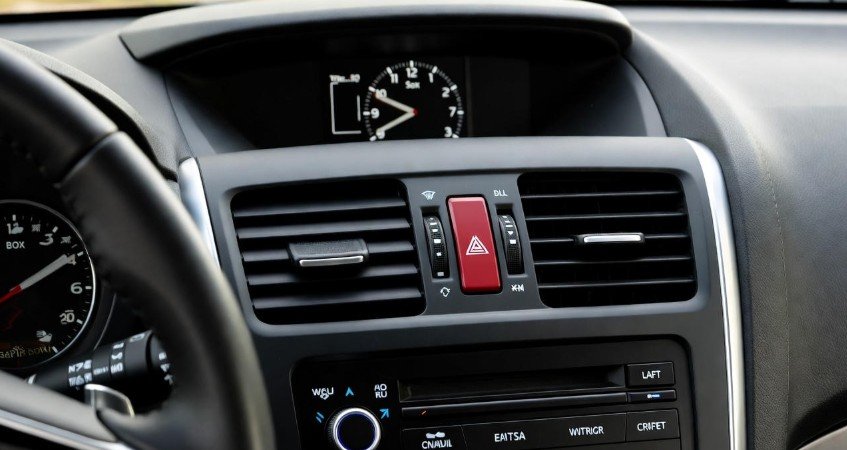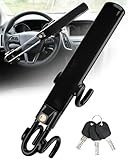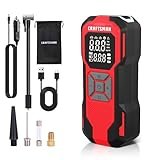How to Change Clock in Subaru Forester: Quick and Easy Steps for Every Driver

If you’ve ever hopped into your Subaru Forester and noticed the time was off, you know how strangely annoying it can be. Maybe it’s daylight savings time, maybe your battery got disconnected, or perhaps you just bought your Forester and haven’t set it up yet. Whatever the reason, knowing how to change clock in Subaru Forester is one of those small but useful skills that keeps your driving experience smooth and organized.
I still remember the first time I had to fix mine. I was running late for a morning meeting, and the dashboard clock was stuck an hour behind. It threw me off completely. But after a quick bit of tinkering with the infotainment screen, I realized it’s a lot simpler than it looks.
In this guide, I’ll walk you through quick and easy steps to set your Subaru Forester clock correctly—no dealership visit or mechanical expertise required. Whether you drive a 2016 model or a newer 2024 Forester, these steps are similar and take just a few minutes.
In This Article
- 1 Step 1: Locate the Display Screen
- 2 Step 2: Access the Settings Menu
- 3 Step 3: Adjust the Time Manually
- 4 Step 4: Save the Changes
- 5 Step 5: Verify the Time Display
- 6 Step 6: Explore Additional Clock Settings
- 7 Step 7: Troubleshooting Common Clock Issues
- 8 Frequently Asked Questions About Changing Clock in Subaru Forester
- 9 Tips for Maintaining an Accurate Clock in Your Subaru Forester
- 10 Quick Recap: Steps to Change Clock in Subaru Forester
- 11 Conclusion: Stay On Time and Stress-Free
Step 1: Locate the Display Screen
The first thing you’ll want to do is locate the central display screen—the command center of your Subaru Forester. This screen isn’t just for your navigation or entertainment; it’s where all your key settings live, including your clock.
In most Subaru Foresters, this display is found right above the air vents, within easy reach of the driver. For models between 2014–2024, it’s usually a touchscreen that combines your audio, navigation, and system settings. If your Forester is an older model, you might see a smaller screen with physical buttons on the sides.
Once you find the screen, make sure your car is either in “ACC” or “ON” mode. You don’t need to start the engine—just turn the key or push the start button once to activate the dashboard.
Pro Tip:
If your screen is blank or flickering, the battery might be weak. In that case, fix the power issue first, since you can’t adjust the clock without display access.
Getting familiar with this display layout makes everything easier. Once you’re comfortable navigating it, the rest of the steps will feel effortless.
Step 2: Access the Settings Menu
Now that you’ve found your display, it’s time to enter the settings menu. This is where Subaru keeps all the customization options—think of it as the vehicle’s control room.
To do this, look for a button labeled “Menu,” “Settings,” or a small gear icon on the screen. Tap it once. You should now see a list of options like Audio, Bluetooth, Navigation, and Clock.
In some Forester models, the “Clock” option might be under “General Settings.” Just scroll or swipe until you find it.
Here’s something I learned from experience: the exact wording might differ slightly depending on your model year. For example:
-
2015–2018 Foresters show it as “Clock Adjustment.”
-
2019–2022 versions may call it “Time/Date Settings.”
-
2023 and newer models often use “Clock Setup.”
No matter what it’s called, once you’re in, you’re halfway done.
Why this step matters:
Many drivers skip exploring the settings, thinking it’s complicated. But Subaru designed the interface to be intuitive. With a few taps, you’re right where you need to be to adjust your clock perfectly.
Step 3: Adjust the Time Manually
This is where the actual adjustment happens. Once you’ve entered the Clock Settings menu, you’ll see two key fields: Hour and Minute.
If your Subaru Forester uses a touchscreen, tap the up or down arrows to modify each number. If it has physical buttons, use the left/right or “+/-” controls on the dashboard.
Take a moment to double-check whether your Forester is using a 12-hour or 24-hour format. Some models default to 24-hour time, which can be confusing if you’re used to standard AM/PM. Don’t worry—you can change this format too (I’ll explain how later).
While adjusting, remember these quick tips:
-
Ensure the correct AM/PM if in 12-hour format.
-
Match your time to your phone or a reliable source.
-
If daylight savings just changed, add or subtract an hour accordingly.
I’ve noticed many people rush through this and end up setting their time a few minutes off. It’s worth taking an extra second to make sure it’s exact—you’ll thank yourself later.
Once everything looks right, stay on the screen. You’re not done until you save your changes.
Step 4: Save the Changes
After adjusting the hour and minute, look for the “Save,” “Set,” or “Done” button on your screen. Tap it once to confirm your new time. Some models may automatically save after a few seconds, but it’s always safer to confirm manually.
If you’re using an older Subaru Forester with physical knobs or buttons, you might need to press “Enter” or “Clock” again to lock in your settings.
A quick way to make sure it worked is to exit the menu and check the display. The updated time should appear right on the main screen or dashboard cluster.
Why saving is important:
Many drivers forget this step and assume their changes didn’t work when they restart the car later. Subaru’s system won’t store new settings until you confirm them, so always save before exiting.
It’s a small step, but it’s what separates a “half-done” setup from a perfectly synced clock.
Step 5: Verify the Time Display
Now that your new time is saved, give it a quick look. You should see the correct time on both your infotainment display and your instrument cluster (depending on model year).
Take a few seconds to ensure everything matches your local time. If it’s even slightly off, don’t hesitate to go back and tweak it again—it’s quick and easy.
Here’s something worth noting: some Subaru Foresters have dual displays—one on the dashboard and one above the center console. If your time doesn’t match across both, you may need to adjust them separately.
This extra check may sound unnecessary, but accuracy matters—especially if you rely on your vehicle clock for daily schedules or road trips. I once missed a lunch meeting by 10 minutes because I trusted the wrong display!
Getting this step right ensures your Subaru Forester keeps you on time and stress-free wherever you’re headed.
Step 6: Explore Additional Clock Settings
One of the things I appreciate about Subaru is how much customization it offers. Beyond just setting the hour and minute, you can explore a few bonus features depending on your model year.
Here are some options you might find:
| Setting Option | Description |
|---|---|
| 12-Hour / 24-Hour Format | Switch between AM/PM or military-style time. |
| Automatic GPS Sync | Syncs your car’s clock with GPS data for precise timekeeping. |
| Daylight Savings Mode | Automatically adjusts time forward or backward when DST changes. |
| Time Zone Selection | Lets you manually select your region if GPS is unavailable. |
If your Subaru Forester supports GPS synchronization, I highly recommend enabling it. It saves you from manually changing the time during trips across states or daylight savings transitions.
You’ll usually find these advanced options under “Time Settings” or “Clock Options.” If you don’t see them, check your owner’s manual or software update notes—Subaru frequently adds new features through system updates.
Exploring these small extras can make your driving experience feel more personalized and modern.
Step 7: Troubleshooting Common Clock Issues
Sometimes, even after following all the steps, things don’t go as planned. Maybe your clock doesn’t save changes, or it keeps resetting itself. Don’t worry—these issues are quite common and easy to fix.
Here are some common problems and quick fixes:
-
Clock keeps resetting: This usually happens due to a weak or recently replaced battery. The internal system loses memory when power is cut. Try charging or replacing the car battery.
-
Clock won’t adjust: Check if the infotainment software needs an update. Subaru occasionally releases patches that fix system glitches.
-
Time doesn’t match GPS: Ensure GPS signal is active and the “Sync with GPS” feature is turned on.
-
Clock runs slow/fast: This might be a minor system lag. Restart your car and recheck. If it continues, consult a Subaru service center.
In my own case, my 2019 Forester kept losing time every time I disconnected the battery. The fix was simple—reset and re-save after reconnecting power.
If none of these solutions work, your local Subaru dealer can reprogram the clock module. But for most drivers, these quick checks solve the issue in minutes.
Frequently Asked Questions About Changing Clock in Subaru Forester
1. How Do I Change the Clock in a Subaru Forester?
Changing the clock in a Subaru Forester is straightforward. Press the “Menu” or “Settings” button on the display screen, navigate to Clock Settings, adjust the hour and minute using the touchscreen or control buttons, and then save the changes. It only takes a few minutes, even for first-time users.
2. Can I Switch Between 12-Hour and 24-Hour Format?
Absolutely. Most Subaru Forester models allow you to toggle between 12-hour and 24-hour clock formats. Simply access the clock menu, look for the “Time Format” or “Clock Options,” and choose your preferred display style. This is handy for drivers who prefer military time or standard AM/PM.
3. What Should I Do if My Clock Is Inaccurate?
If your Forester clock shows the wrong time, check whether the vehicle battery was recently disconnected or if daylight savings just changed. You can manually adjust the time in the clock settings. Additionally, ensure GPS synchronization is enabled for automatic accuracy.
4. Is GPS Synchronization Available in All Forester Models?
Not all Subaru Foresters have GPS sync, but most recent models do. This feature automatically updates your clock based on GPS signals, which is perfect for cross-country trips or when you frequently travel across time zones.
5. Why Doesn’t My Clock Save After Adjustment?
If your changes aren’t saving, it might be a system glitch or low battery issue. Try restarting your vehicle, re-entering the clock menu, and saving again. In rare cases, a software update or dealer visit may be necessary.
6. Can I Set Daylight Savings Automatically?
Yes, some Forester models offer automatic daylight savings adjustment. Check under Clock Settings or Time Options and enable DST if available. This feature prevents you from manually changing the time twice a year.
7. How Do I Adjust Time After Replacing the Battery?
Replacing the car battery often resets your Subaru’s clock. After reconnecting the battery, go back to the Clock Settings menu and reset the correct time. If your model has GPS sync, the clock should automatically update once the vehicle detects a GPS signal.
8. Can I Customize Clock Appearance?
In certain Forester trims, you can tweak how the clock appears on your display. Options may include font size, color theme, and position on the screen. This allows for a personalized dashboard experience, making it easier to glance at the time while driving safely.
Tips for Maintaining an Accurate Clock in Your Subaru Forester
Keeping your clock accurate is more than a convenience—it’s part of a smooth driving experience. Here are some practical tips:
-
Enable GPS Sync Whenever Possible: This ensures your time adjusts automatically if you cross time zones.
-
Check Clock After Battery Replacement: Always reset or verify the time to avoid surprises.
-
Use Daylight Savings Settings: If available, turn on automatic DST adjustments.
-
Double-Check After Software Updates: Occasionally, infotainment system updates may reset settings.
Personal Experience: I once relied on the GPS-synced clock during a road trip across three states. It saved me from missing a meeting by adjusting automatically as I crossed time zones. The convenience is undeniable.
Quick Recap: Steps to Change Clock in Subaru Forester
Let’s summarize the quick and easy steps:
-
Locate the Display Screen – Find the central infotainment screen or dashboard display.
-
Access Settings Menu – Press “Menu” or “Settings” and find Clock Options.
-
Adjust Time – Set the correct hour and minute, choosing between 12-hour or 24-hour format.
-
Save Changes – Confirm by pressing “Save” or “Done.”
-
Verify Time – Check that the time appears correctly on the display.
-
Explore Additional Options – Enable GPS sync, DST adjustment, or customize appearance.
Following these steps ensures your Subaru Forester clock remains accurate and functional without any hassle.
Conclusion: Stay On Time and Stress-Free
Knowing how to change clock in Subaru Forester may seem trivial, but it’s surprisingly important for your daily routine and road trips. From ensuring punctuality to syncing with GPS for hassle-free travel, a properly set clock enhances your driving experience.
By following the steps outlined in this guide—from locating the display to exploring advanced options—you can maintain an accurate clock effortlessly. Whether it’s a quick manual adjustment or automatic GPS synchronization, your Forester’s clock will keep you organized, stress-free, and on schedule.
Next time daylight savings hits or you swap your battery, you won’t be fumbling with buttons or calling the dealership. With just a few taps, your Subaru Forester’s clock will be perfectly set, letting you focus on enjoying the road ahead.
Safe travels, and may your journeys always start right on time!






